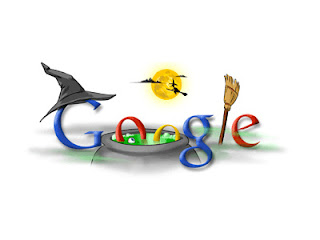- Software selected by Google
- Always free
- Ready to use in just a few clicks!
|
|
|
|
|
Download This package at : http://pack.google.com/intl/en/pack_installer.html?hl=en |
|
|
|
|
|
Download This package at : http://pack.google.com/intl/en/pack_installer.html?hl=en |



 |
| Search Result |
The Contacts interface of Gmail has not seen many changes since its 2004 launch even the core Gmail has been changed significantly . Links to Contacts and Tasks have been added to the Gmail inbox, in the upper lefthand corner,above the Compose Mail button.
Users can hide the Contact and Task links by click on the Mail link above them.
Compose mail is now a button rather than a link. A smaller header area puts the first message in users' inbox.

The Select All, None, Read, Unread, and Starred links that used to be above your messages are now options in a drop-down menu, next to the Archive button. Keyboard shortcuts now work in Contacts too, and Google has made selecting and grouping contacts more like selecting and labeling email. Users can now sort contacts by last name.
Use custom labels for phone numbers and other fields. Now, when users have the option to undo their recent changes.
Automatic saving: This means users no longer need to worry about 'edit' mode or `view' mode — just edit away and Gmail will save your changes.

Structured name fields: Users can now set name components (i.e. Title, First, Middle, Last and Suffix) explicitly or continue to use the name field as a free form area if they prefer a less structured approach.
Manual and bulk contact merge: Users can now merge contacts from the More actions menu. All they need to do is select the contacts they would like to merge and select Merge contacts from under the More actions menu.

This puts the Ovi browser in the direct competition with Opera's Mini which has been in this space since 2005 and is arguably the most used mobile web browser today.Like Opera Mini, Ovi Browser is a Java client that uses a compression proxy to reduce bandwidth.
Nokia said,"We’re in the process now of building up our global infrastructure to provide the best possible speed, performance, and reliability for millions of users. We’ll also be adding features to improve local search and personalization and extending support for more local languages and markets “.

Ovi Browser brings rich web browsing to Series 40 devices that's fast, easy, and saves on data charges. The browser is powered by patented cloud-based Internet compression technology that delivers advanced web pages to your phone. As a result, pages show up quicker than ever and over the air data usage is reduced up to 90%.
Beyond performance, the browser includes an innovative user interface that makes it easy to access your favorite content directly from the start page without having to hunt through menus
Other features include support for form and URL auto complete. Users can also select their default search engines. It also supports various view modes including a full page view, zoomed-in view, column view.
The Ovi browser is now designed for Nokia's mid-range Series 40 phones. The new mobile app is compatible with phones like Nokia 2700 Classic, Nokia 2730 Classic, Nokia 3120 Classic, Nokia 3600 Slide, Nokia 5130 XpressMusic, Nokia 5220 Xpressmusic, Nokia 5310 XpressMusic, Nokia 5330 Mobile TV Edition, Nokia 5330 Xpressmusic, Nokia 5610, Nokia 6300i, Nokia 6303, Nokia 6500 Slide, Nokia 6500 Classic, Nokia 6600 Slide, Nokia 6700 Classic, Nokia 7210 Supernova, Nokia 7900 Prism, Nokia X3.

Usually we used to hold the backward key in your browser, inorder to access the history page. Here is the new chrome extension that allows us to view the history page with a single click on your browser.One click access to History page from the toolbar. Click the following link to install the history button in your chrome browser.
https://chrome.google.com/extensions/detail/fofpnhmbgmmeaialapfddhbhfongoinh
Now a new computer program has fortunately decoded a written ancient language last used in Biblical times into a known language. The success could contribute "resurrecting" ancient texts that are no longer understood.
This program has been developed by a team at the Massachusetts Institute of Technology, the program automatically translates written Ugaritic, which consists of dots and wedge-shaped stylus marks on clay tablets. The script was last used around 1200 B.C. in western Syria.

A sample of Ugaritic script on a gift-shop replica.
To evaluate the efficiency of their programme, the researchers gave reference of the Hebrew language, which is similar to Ugaritic.Through repeated analysis, the program linked letters and words to map nearly all Ugaritic symbols to their Hebrew equivalents in a matter of hours.
According to the scientists, the programme looks for commonly used symbols in the two languages and gradually refines its mapping of the alphabet until it can go no further.The system is then able to make assumptions about the way different words are formed and whether they consist of a prefix and a suffix, for example.
The Ugaritic alphabet has 30 letters, and the system correctly mapped 29 of them to their Hebrew counterparts.Of the words that the two languages shared the programme was able to correctly identify 60 per cent of them.
The programme also assumes that the computer knows where one word begins and another ends, something, which is not always the case.
Barzilay thinks the decoding program can overcome this hurdle by scanning multiple languages at once and taking contextual information into account improvements that could uncover unexpected similarities or links to known languages.